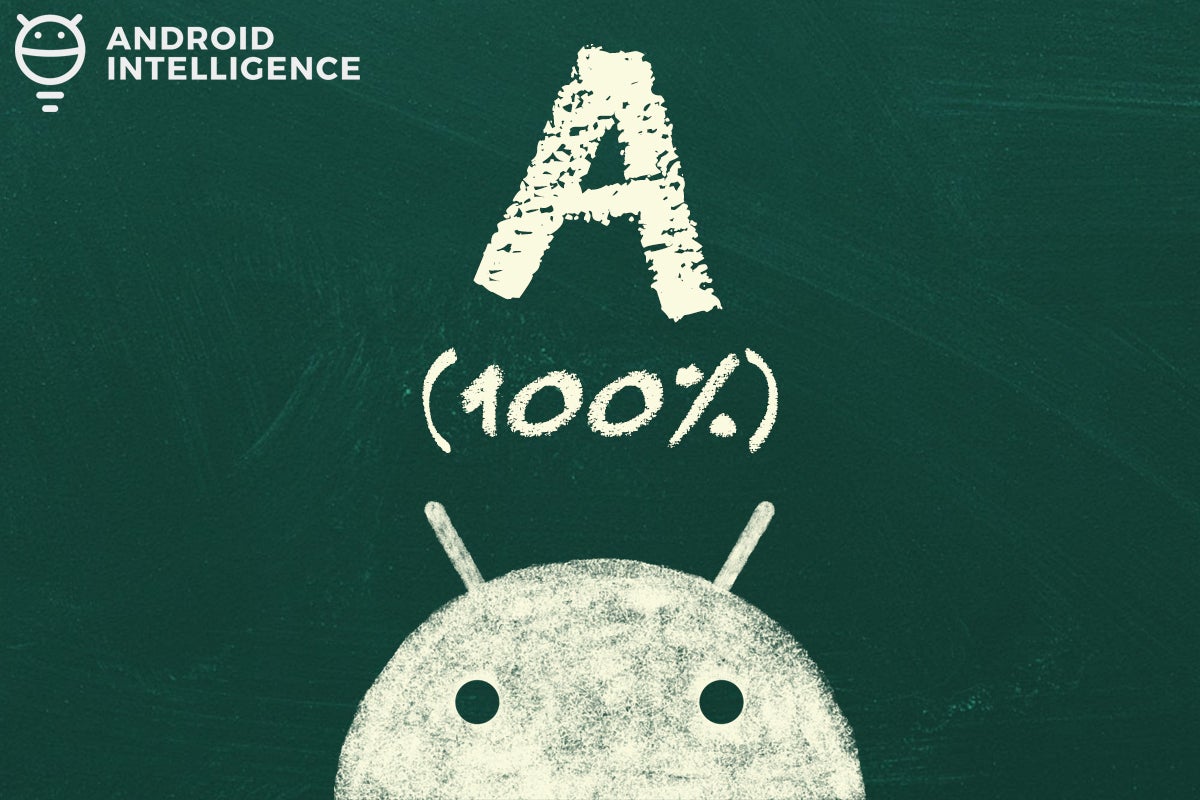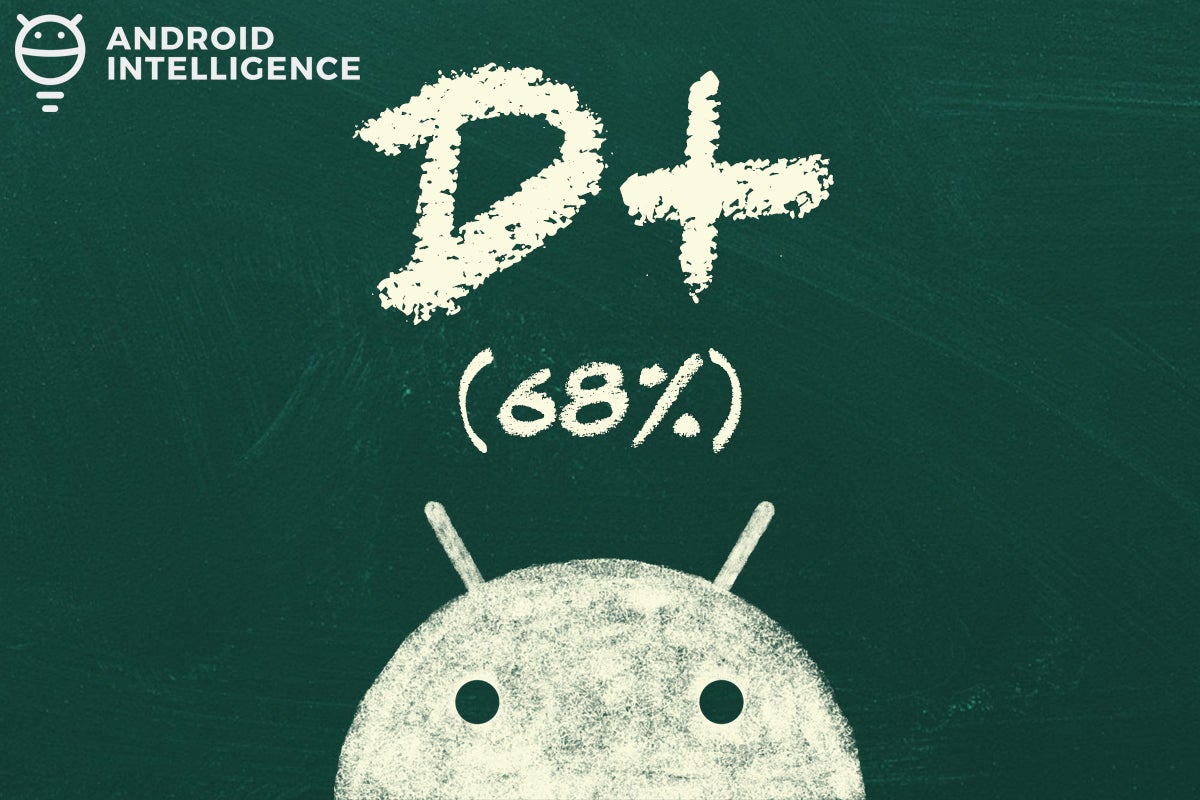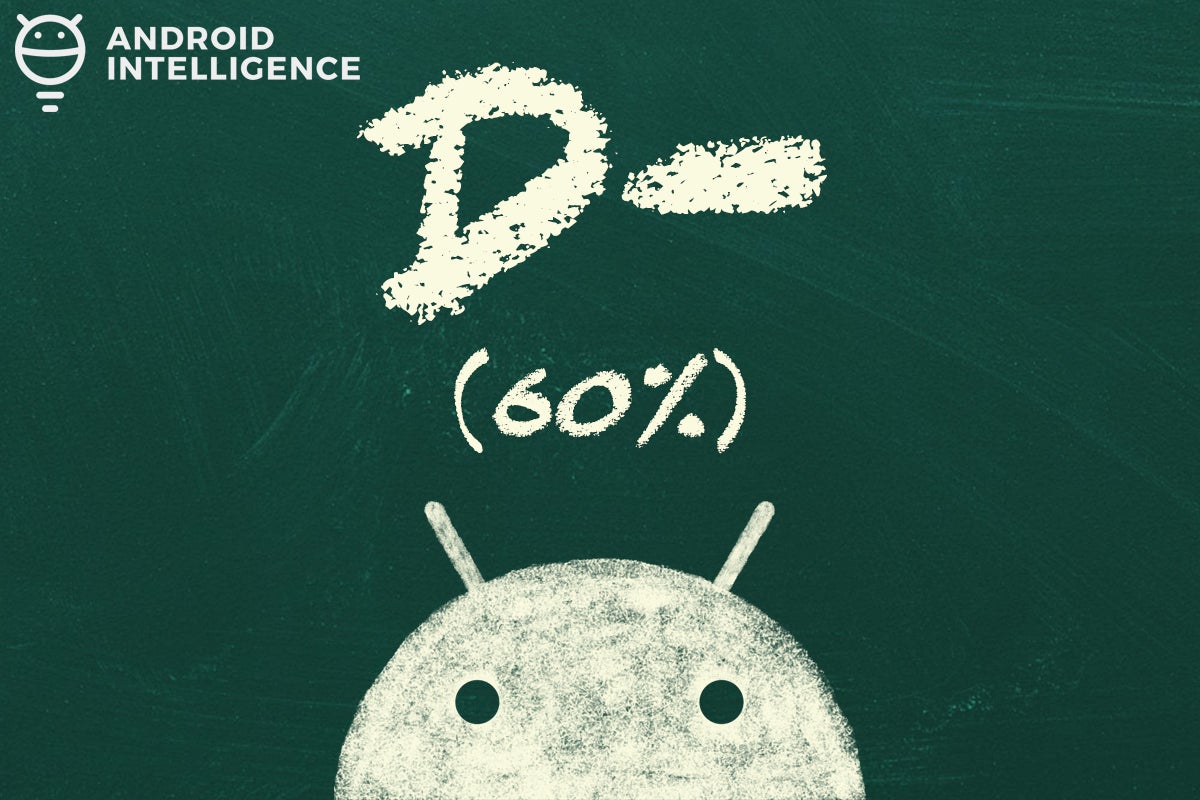I’ve been closely monitoring how different Android device-makers do with post-sales software support for something like 97 years now, I think — and every year around this time, I brace myself for a brutal discovery.
Here’s the thing: Six months after a major operating system’s release, most phones should be running that current software. I feel like that’s a pretty obvious-seeming and uncontroversial statement to make.
And yet, every year around this time, I start crunching the numbers (and also crunching some crackers, as all that number-crunching can really make a fella famished) — and you know what I find? Almost inevitably, a shockingly large portion of the top-tier, top-dollar Android phones in the land are either still stuck on 18-month-old software or just recently got the update they should have gotten six months earlier.
The last couple cycles, at least, we saw some manner of relative progress and improvement with Android upgrade delivery times, even if the overall results were still pretty dismal. So I had hoped that this year would continue that general trajectory and show us at a minimum some more modest change in the right direction.
Um, yeah — so much for that.
If there’s one trend that shines through the data this year, it’s the same one we’ve seen pretty consistently over time: Android device-makers, on the whole, just aren’t very good at getting out software updates in a reasonably timely and reliable manner — even when it comes to their highest-paying customers. Companies can try to spin the story any way they want, but data doesn’t lie. And this year’s numbers speak volumes.
Now that we’re six full months past the launch of Android 11, it’s time to step back and look at who’s making upgrades a priority and who’s treating ’em as an afterthought. Get ready for some data-driven wake-up calls.
(Want the full nitty-gritty on how these grades were calculated? You can find a detailed breakdown of the formula and every element taken into account at the very end of this article.)
 JR/Google
JR/Google - Length of time for upgrade to reach current flagship: 0 days (60/60 points)
- Length of time for upgrade to reach previous-gen flagship: 0 days (30/30 points)
- Communication: Excellent (10/10 points)
The one bit of unambiguously good news with this year’s Android upgrade cycle is also probably the least surprising. Google does a consistently commendable job of getting current Android software into the hands of the people who purchase its self-made Pixel products, with near-instant rollouts for all current devices and no real cause for complaint.
That hasn’t always been the case, entirely. This is actually just the third year that Google has received a 100% score in this analysis. Up until the Android 9 rollout, in 2018, the company had always either faltered slightly with its previous-gen flagship rollout or had some points docked for leaving certain models of its phones hanging longer than others and then failing to communicate anything about their progress.
With Android 11, though, it’s a completely clean slate and a shining example of how Android upgrades ought to be handled. Google announced Android 11, following its seven-month development preview period, and then started rolling the software out to its then-current-gen Pixel 4 flagship and its then-previous-gen Pixel 3 model — along with its three-year-old Pixel 2 phone and all of its midrange Pixel “a” devices, no less — on the very same day.
(For the purposes of this analysis, by the way, it’s the start of a rollout — to a flagship phone model in the U.S. — that counts, as you can read about in more detail here.)
And while Google’s usual “rolling out in waves” asterisk applied to a certain degree, with some Pixel owners not receiving the software on that very first day, Android 11 made its way to all supported Pixel devices within a reasonable amount of time and without the need for any extra communication beyond the company’s initial announcement. And sure, we could argue that Google has a unique advantage in that it’s both the manufacturer of the devices and the maker of the software — but guess what? That’s part of the Pixel package. And as a person purchasing a phone, the only thing that really matters is the experience you receive.
As usual, the results tell you all there is to know: Google’s phones are without question the most reliable way to receive ongoing updates in a timely manner on Android. It’s the only company that makes an overt guarantee about that, and it’s absolutely the only one that delivers on it.
Samsung
 JR/Google
JR/Google - Length of time for upgrade to reach current flagships: 91 days (47/60 points)
- Length of time for upgrade to reach previous-gen flagships: 136 days (21/30 points)
- Communication: Poor (0/10 points)
We hear a lot of buzz about how Samsung is absolutely killing it with upgrades as of late. And you know what? To the company’s credit, it has been doing better than usual — relative to its own past performance. Heck, it’s even in second place this year, though that says more about the rest of the ecosystem than about Samsung itself. But when you assess the company’s level of support with a standard, consistent scale, you see that Sammy isn’t exactly knocking it out of the park.
This year, in fact, Samsung did about the same as what it managed last year — with some very slight improvements in delivery times but not enough to move the needle on its overall score. (Since Samsung has thus far treated its Galaxy S and Galaxy Note phones as co-flagships, incidentally, I look at the delivery time to both devices and then average those figures to achieve a single score.)
And when you look back further into Android upgrade history, you realize all that’s happened over these last couple years is that Samsung has returned to the level of mediocrity it was achieving six years ago, with 2014’s Android 5.0 Lollipop rollout. The company had a rough run of horrifically bad years after that — so, yes, it has been doing better than those really rough years as of late. And it has been servicing more phones than ever and actually getting updates out to even its non-flagship phones within this initial six-month period. That’s certainly something.
But you can’t grade a company only relative to its own past letdowns and the low bar it’s established for itself. And the number of different phone models Samsung has to juggle shouldn’t be a factor for us, as people who pay for and use the devices. Again, regardless of any circumstances within the company you’re purchasing a phone from, all that ultimately matters is the experience that you, as the customer, receive.
And on that note, as usual, Samsung has made no effort whatsoever to communicate with its customers about its upgrade process or what can be expected along the way in this Android upgrade cycle.
I’ve said it before, and I’ll say it again: Samsung can — and should — do better. Particularly for a company of its size and with its immense financial and engineering-related resources, delivering updates to people three to five months late (even now, with the benefits of Google’s recent Project Treble Android upgrade processing improvements in place) comes down to one thing and one thing only: priorities.
OnePlus
 JR/Google
JR/Google - Length of time for upgrade to reach current flagships: 33 days (55/60 points)
- Length of time for upgrade to reach previous-gen flagship: Still waiting (0/30 points)
- Communication: Mediocre (5/10 points)
After a solid three-year streak of holding the second-place spot and steadily increasing its performance with Android upgrades, OnePlus has fallen hard with its Android 11 rollout. The company actually did pretty well with its current flagship phones, the OnePlus 8 and 8 Pro, but it completely dropped the ball with its previous-gen flagship — the OnePlus 7T, which still hasn’t gotten the update as of this writing — and that was enough to bring down its score considerably.
Also not helping is the fact that OnePlus never does a heck of a lot in terms of communication with customers about its progress. The first official peep from the company came in January, when it posted a message in its forums noting that it had run into a “data decryption issue” with the OnePlus 7T phone and consequently was running later than it had anticipated with that device’s Android 11 delivery. That four-months-late acknowledgment is better than nothing, of course — and it’s the reason the company got a five-point communication score instead of a flat zero — but it isn’t even close to enough.
I can only hope that this stumble was a genuine fluke and that OnePlus will get back on track with Android 12 later this year. After seeing the company go from a 65% D score with Android 8 to a 74% C with Android 9 and then a pretty-darn-good 85% B with Android 10, it’d be a real shame to see subpar scores become its norm again.
NEXT PAGE: The Hall of Shame “F” club — and a few important footnotes




